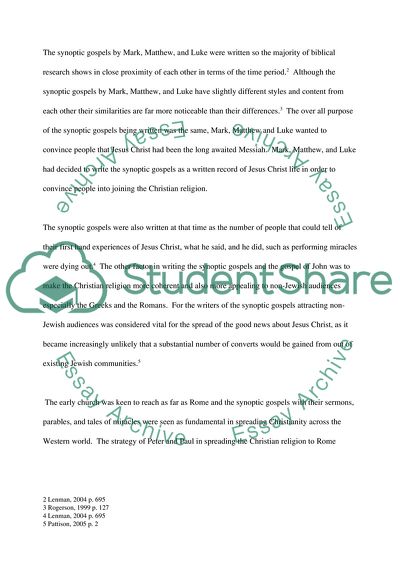Cite this document
(Comparison of the Role of Miracles in the Synoptic Gospels and in John Term Paper, n.d.)
Comparison of the Role of Miracles in the Synoptic Gospels and in John Term Paper. Retrieved from https://studentshare.org/religion-and-theology/1713802-as-below
Comparison of the Role of Miracles in the Synoptic Gospels and in John Term Paper. Retrieved from https://studentshare.org/religion-and-theology/1713802-as-below
(Comparison of the Role of Miracles in the Synoptic Gospels and in John Term Paper)
Comparison of the Role of Miracles in the Synoptic Gospels and in John Term Paper. https://studentshare.org/religion-and-theology/1713802-as-below.
Comparison of the Role of Miracles in the Synoptic Gospels and in John Term Paper. https://studentshare.org/religion-and-theology/1713802-as-below.
“Comparison of the Role of Miracles in the Synoptic Gospels and in John Term Paper”. https://studentshare.org/religion-and-theology/1713802-as-below.


